
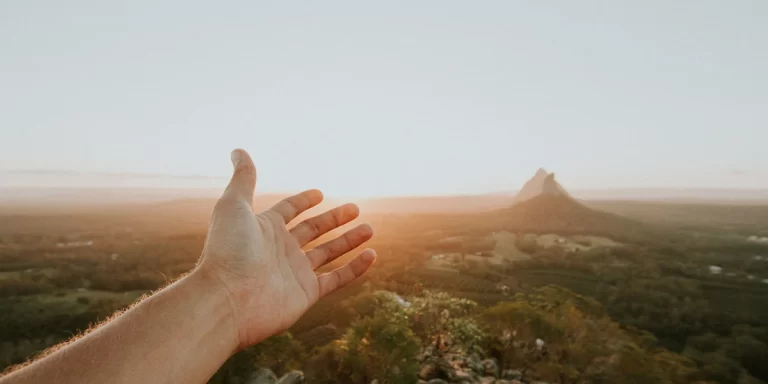
Backpacking in Australia offers immense variety for outdoor enthusiasts, from the iconic red sand dunes of the Outback to the tropical rainforests of Queensland, including popular destinations like the Great Ocean Road.
And that’s what this guide is all about – backpacking in Australia. We’ll provide tips to help you prepare for backpacking across this diverse country as well as showcase the TOP 5 multi-day trails in Australia.
From sun-baked deserts to misty eucalyptus forests, Australia’s dramatic landscapes provide spectacular backpacking opportunities. Whether you’re an experienced thru-hiker or new to backpacking in Australia, the trails highlighted here will inspire your next adventure in the Land Down Under.
Top multi-day trips in Australia from our point of view and loved by many:
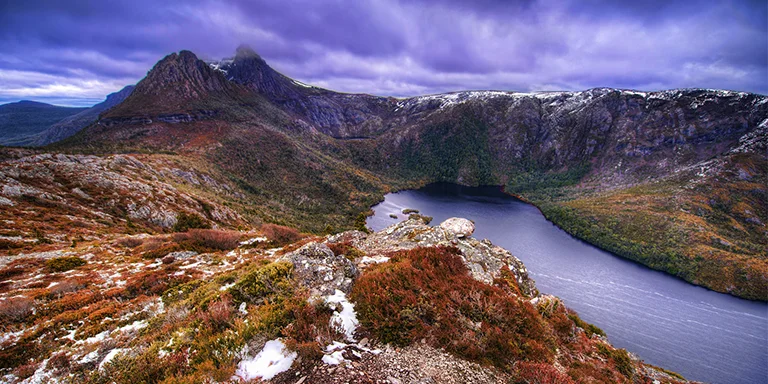
Luke Zeme, CC BY-SA 2.0, via flickr
Length: 48.8 mi / 78.5 km
Type: Point to point
Difficulty: Hard
Elevation Gain: 7286 ft / 2221 m
Location: Cradle Mountain-Lake St Clair National Park (Tasmania)
Estimated Hiking Calorie Burn: 10 000 calories
More Details: See on AllTrails
The challenging 49 mile Overland Track is a premier Tasmanian wilderness trek from Cradle Mountain to Lake St. Clair. Traversing glacial valleys, ancient rainforests, and alpine meadows, the route ascends rugged peaks like Mt. Ossa within World Heritage protected lands. Requiring permits and bookings during peak season, the iconic track draws thousands yet delivers solitude amid pristine vistas. Despite changeable weather demanding cold-weather gear, the Overland Track remains a breathtaking, transformative adventure and bucket list quest for intrepid backpackers.
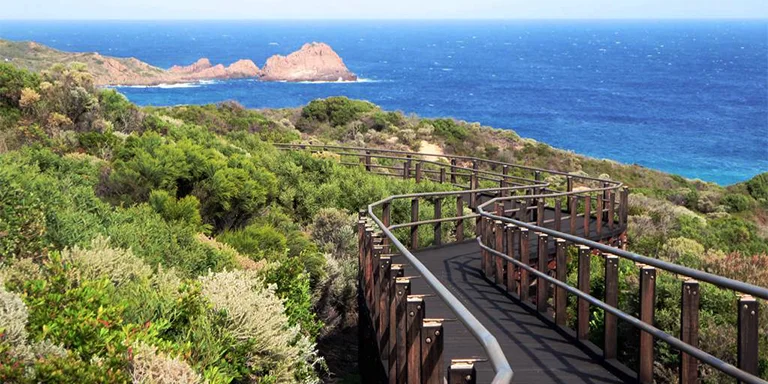
David Stanley, CC BY-SA 2.0, via flickr
Length: 78.6 mi / 126.5 km
Type: Point to point
Difficulty: Hard
Elevation Gain: 7598 ft / 2316 m
Location: Leeuwin-Naturaliste National Park (Western Australia)
Estimated Hiking Calorie Burn: 12 000 calories
More Details: See on AllTrails
Spanning 120 miles along the Leeuwin-Naturaliste Ridge from Cape Naturaliste to Cape Leeuwin, the demanding Cape to Cape Track is a breathtaking coastal odyssey. The route traverses wind-carved cliffs, granite headlands, secluded beaches and sheltered bays within Leeuwin-Naturaliste National Park. Offering magnificent scenery from start to finish, the multi-day trek challenges hikers with rocky terrain yet delivers immense rewards. Bucket-list walking for seasoned Aussie bushwalkers, the Cape to Cape Track is best completed over 5-8 days while camping at designated sites along the way. With proper fitness and preparation, this iconic coastal track promises a truly unforgettable wilderness experience.
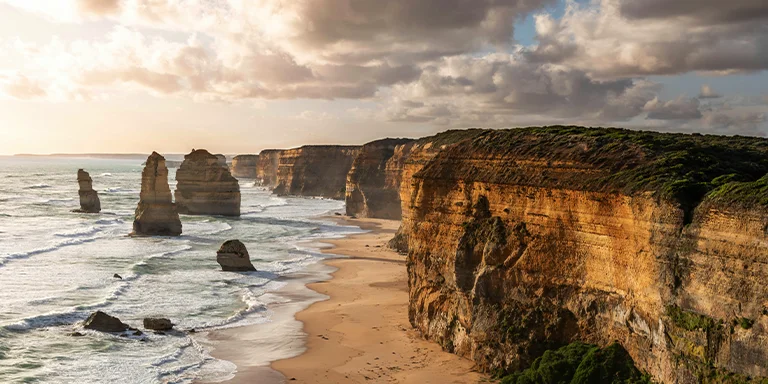
Length: 60.3 mi / 97 km
Type: Point to point
Difficulty: Hard
Elevation Gain: 8904 ft / 2714 m
Location: Great Otway National Park (Victoria)
Estimated Hiking Calorie Burn: 10 800 calories
More Details: See on AllTrails
Stretching 60 miles along dramatic coastal scenery, the challenging Great Ocean Walk from Apollo Bay to the Twelve Apostles is a premier Australian trek. Traversing towering forests, rugged cliff tops and sandy beaches over 6-8 days, the route immerses hikers in the beauty of the Southern Ocean. With options for shorter day hikes, the trail rewards with views of koalas, diverse environments and spectacular lookouts like Johanna Beach. Despite some boggy sections and steep hills, completing the entire point-to-point journey or part of this scenic trail promises an unforgettable bucket list adventure along one of the world’s great coastal walks.
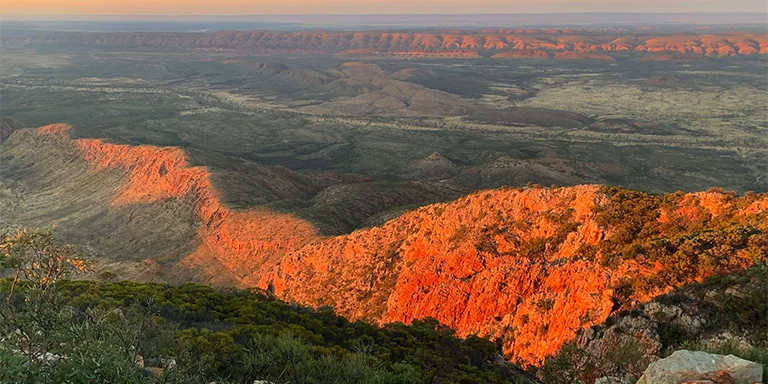
Caroline Jones, CC BY-SA 2.0, via flickr
Length: 138.1 mi / 222.2 km
Type: Point to point
Difficulty: Hard
Elevation Gain: 23 838 ft / 7266 m
Location: Tjoritja / West MacDonnell National Park (Northen Territory)
Estimated Hiking Calorie Burn: 24 000 calories
More Details: See on AllTrails
The extremely challenging 138-mile Larapinta Trail traverses the rugged West MacDonnell Ranges from Alice Springs to Mount Sonder. Requiring careful planning and self-sufficiency, this iconic Australian trek immerses hikers in the beauty of the Red Centre’s ancient landscapes. Despite scorching summer heat, rocky and steep terrain, and the need to cache water, completing the multi-day journey along its twelve sections provides a deeply rewarding wilderness experience. With proper fitness, supplies, and precautions for this remote trail, hardy backpackers can embrace the magic of walking through time on the stunning Larapinta.
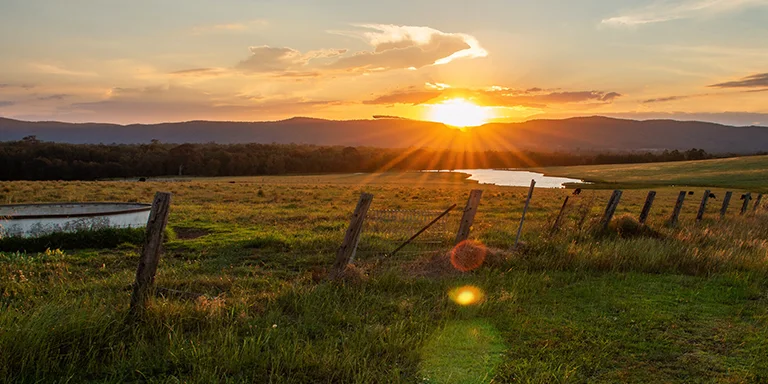
Joey M Wilson, CC BY-SA 2.0, via flickr
Length: 168 mi / 270 km
Type: Point to point
Difficulty: Hard
Elevation Gain: 25 892 ft / 7892 m
Location: Lane Cove National Park (New South Wales)
Estimated Hiking Calorie Burn: 28 800 calories
More Details: See on AllTrails
Spanning 105 miles from Sydney to Newcastle, the challenging Great North Walk connects two major cities along over 150 miles of rugged yet captivating terrain. Traversing diverse natural landscapes from valleys to peaks, the route allows backpackers to immerse themselves in Aboriginal history while encountering native flora and fauna. The multi-day track can be done in sections or end-to-end, requiring planning and self-sufficiency. Despite tough conditions like heat, rain and mud at times, completing Australia’s longest marked footpath is a rewarding way to experience the beauty, culture and wilderness of New South Wales.
Keep in mind that Australia is a vast country with diverse climates, so the optimal time can vary based on the specific region you plan to explore:
Before finalizing your gear choices, examine the historical yearly weather statistics for Australia:
| Costal | Jan | Feb | Mar | Apr | May | Jun | Jul | Aug | Sep | Oct | Nov | Dec |
|---|---|---|---|---|---|---|---|---|---|---|---|---|
| High °F | 84 | 84 | 82 | 79 | 75 | 72 | 68 | 72 | 75 | 79 | 82 | 84 |
| Low °F | 68 | 70 | 66 | 63 | 57 | 52 | 48 | 50 | 54 | 59 | 64 | 68 |
| Rainy days | 13 | 14 | 15 | 11 | 10 | 8 | 7 | 7 | 7 | 9 | 10 | 11 |
| Central | Jan | Feb | Mar | Apr | May | Jun | Jul | Aug | Sep | Oct | Nov | Dec |
|---|---|---|---|---|---|---|---|---|---|---|---|---|
| High °F | 95 | 93 | 90 | 81 | 72 | 66 | 64 | 73 | 84 | 86 | 91 | 95 |
| Low °F | 72 | 70 | 63 | 55 | 46 | 41 | 39 | 48 | 52 | 59 | 64 | 68 |
| Rainy days | 6 | 6 | 4 | 3 | 4 | 4 | 3 | 3 | 3 | 6 | 8 | 9 |
Not sure if Australia is right for you?
Don’t forget to check out our backpacking guide for New Zealand.
While backpacking in Australia, having a campfire requires extra planning due to wildfire risk. Fires are only permitted in dedicated fire pits at designated campgrounds, and never during total fire ban periods typically spanning summer and fall. Use only dead fallen wood and fully contain the fire. Fully extinguish all embers, ashes, and sticks using water until items are cold to the touch before departing the site. Bushfires pose a major threat, so adhere closely to fire safety precautions year-round.
When backpacking and bushwalking in Australia’s scenic nature, research trails and carry maps to avoid getting lost in the remote bush. Tell someone your planned route and check in regularly. Wear sun protection and carry plenty of water to prevent dehydration. Watch for wildlife like kangaroos while camping, and check shoes for spiders or snakes before putting them on. Swim only where signs permit to avoid crocodile danger. Exercise caution near cliffs and on rugged trails. Prepare for quickly changing weather and pack proper budget camping gear and travel tips. Following basic precautions will allow you to safely enjoy Australia’s natural beauty and outdoors.
When hiking in Australia, be alert and make noise to avoid surprising wildlife. Give snakes, spiders, and other dangerous animals a wide berth. Do not try to touch or feed wild animals. Carry insect repellent to prevent mosquito bites that may carry disease. Wear closed shoes and long pants to prevent bites and stings. If confronted by aggressive wildlife, back away slowly and calmly without sudden movements. Seek medical attention promptly for any bites or stings. Exercising caution and respecting wildlife habitat is the best way to avoid dangerous encounters while enjoying Australia’s natural beauty.
Unless you plan to study, work, or live in Australia, U.S. passport holders don’t need a visa for tourist visits up to 90 days. You must have an electronic travel authority (ETA) to fly into or transit through Australia. Apply for the ETA online before you go, which just requires your passport details. There’s a small service charge. The ETA lets you stay up to 3 months as a tourist. Some other visa rules apply if you have a criminal record or medical concerns.